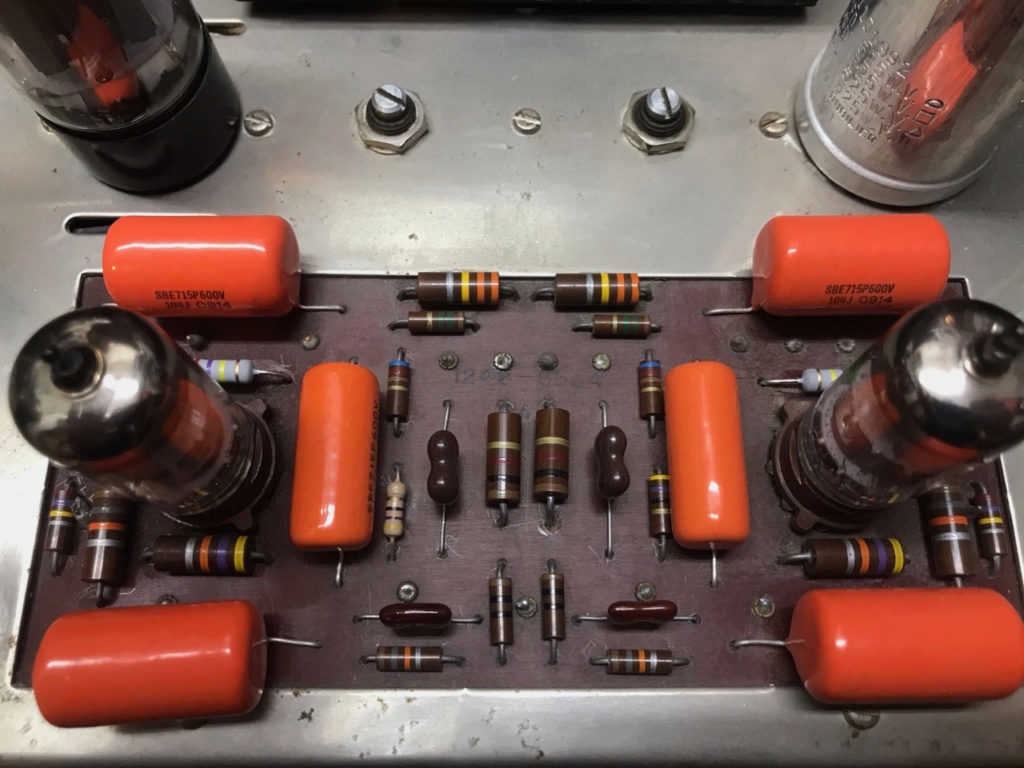 by Solder Slinger Thu Jan 21, 2021 12:49 pm
by Solder Slinger Thu Jan 21, 2021 12:49 pm
Hi dcboucher,
A couple of other suggestions:
Robert Tomer, a 1950s "tube guru" suggested that adding an NTC (Negative Temperature Coefficient varistor, CL-80 (3 amp rated) is the part # I believe) to the 117 vac power supply leads would extend the tube heater life 4X by creating a slow turn-on for the tube heaters (as well as being easier on the rest of the amp). This also will lower the voltage seen by the amp a volt or 2. The current 121-124 VAC supplied by our modern power company is somewhat higher than what the amp was designed for and this will help lower that voltage a bit. You could also use (2) CL-90s (2 amp rated) in parallel to slow down the turn-on even more as well as dropping the voltage a bit more. I put mine on the hot (black) lead of the power cord.
Secondly, biasing the amp at 1.45 volts is good, I'd run it at 1.25 volts but YMMV... but please check the biasing resistors; the 15.6 ohm carbon comp resistors used to measure the feedback voltage off pin 8 of the output tubes may have drifted over time. Using a pair of metal film resistors to make up a new 15.6 ohm value will work but I prefer to use a 1 ohm, 1% or 1/2% resistor, which when using a meter set to mV range will give you the actual combined cathode currents in mA. This also lowers the internal impedance of the amp giving it a faster, snappier sound. Easy enough that you can experiment with this if you want. You might also want to add the individual tube bias adjustment kit from DynaKit Parts to better match the tube currents.
Regarding feedback, there are two parts to the feedback circuit on the ST-70, a 390 pf cap (marked mmf on schematic) from the primary ultralinear tap side of the output transformer and the 1K resistor from the 16 ohm tap of the secondary side. I run my ST-70 with no feedback, if you want feedback, try moving the feedback tap to the 4 or 8 ohm taps depending the impedance of the speakers you are using and doubling the resistance each time you move the tap down. You might also experiment with increasing the feedback resistor even more to reduce feedback.
My ST-70 isn't typical, I use a Triode Electronics driver board, somewhat modified, a Triode Electronic power transformer and an SDS cap board plus about another 700 mfd of caps, solid state diodes and a time delay on the high voltage. I have the bias set up so I can run EL34s, 6550s, KT90s or KT120s in my amp with 10 turn, 25K pots, usually use KT-90s as they sound very good and offer a little more clearance between the tubes for better air circulation.
Enjoy your ST-70 in whatever format you use, it's a great sounding amp.




